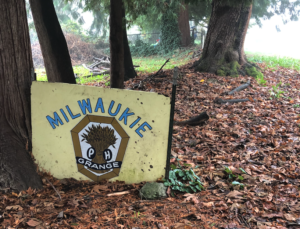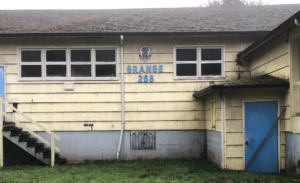 by Elliot McIntire
by Elliot McIntire
As you come up the hill from McLaughlin Boulevard on River Road you may have noted a plain building on the right identified as Milwaukie Grange. Unless you have a rural background somewhere in your personal history you may have wondered what it is. At one time the Granger movement was a major force among America’s agricultural communities, and still plays a significant role in many rural areas.
Formally called The National Grange of the Order of Patrons of Husbandry, the Grange was established soon after the Civil War as a coalition of farmers to fight monopolistic grain transport practices by the railroads and grain elevators. Membership grew to over 850,000 across the midwest and west, but by 1880 had dropped to around 100,000, but rebounded in the 20th century. Today it has around 160,000 members in 2,100 communities in 36 states. It remains a fraternal organization of farmers and takes an active stance on issues affecting the agricultural sector.
In many areas the Grange Hall serves as a community center and meeting hall, and is a focus of rural community activities. Clackamas County has sixteen Granges, including Beavercreek, Sandy, Molalla, Aurora, Boring, Estacata and Eagle Creek. Some, like the Milwaukie, Oregon City and Wilsonville Granges, have been engulfed by urban growth, but continue to provide a focus for area farmers. Next time you are at the County or State Fair be sure to visit the Grange exhibits with their displays of farm products, canning, quilting, and baking.
Editor’s Note: The Patrons of Husbandry (note the P of H on the sign), or the Grange, was founded in 1867 to advance methods of agriculture, as well as to promote the social and economic needs of farmers in the United States. Here are some photos of our local grange.


